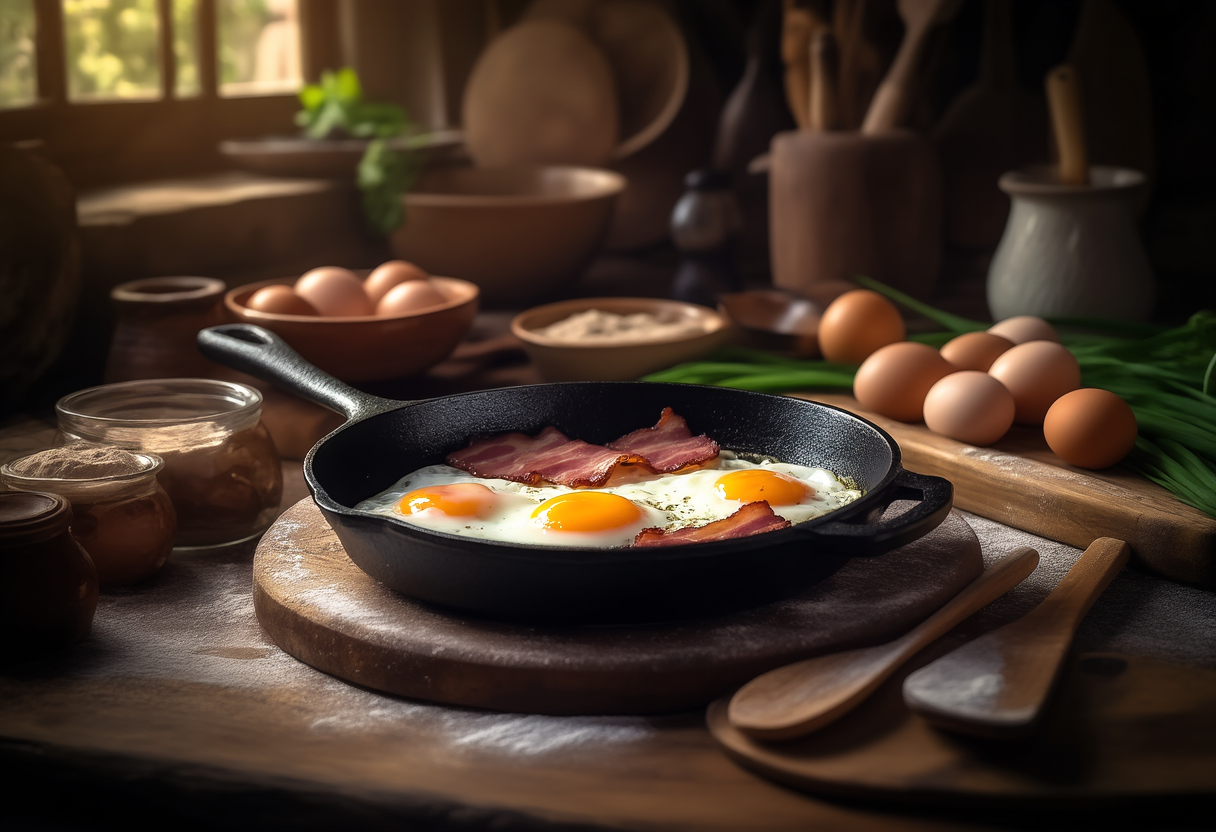Cast Iron Cookware: The Ultimate Guide to Versatility and Longevity
Cast Iron Cookware isn't just about cooking; it's a culinary legacy. These durable pieces offer unmatched heat retention and versatility, making them a staple in kitchens worldwide. This guide explores the many facets of cast iron, from maintenance techniques to the best recipes. Uncover the secrets behind how to keep your cookware in pristine condition and how it's become beloved by chefs and home cooks alike. Dive into its historical significance and learn why cast iron remains a favorite in both modern and traditional cooking.
Understanding Cast Iron Cookware
Cast Iron Cookware has become a staple in both professional and home kitchens, largely due to its remarkable properties. Unlike many modern cookware options, cast iron is known for its ability to retain heat evenly, making it ideal for slow-cooking recipes that require consistent warmth. Moreover, it possesses natural non-stick qualities when seasoned properly, allowing for diverse cooking methods—from frying to baking. This versatility extends to various cuisines; a cast iron skillet can seamlessly transition from stovetop to oven, adding depth to everything from cornbread to savory stews. Therefore, investing in quality Cast Iron Cookware is more than just a wise culinary choice; it’s a commitment to enduring kitchenware that provides delicious meals for years to come. Additionally, the unique ability of cast iron to develop a natural patina enhances its cooking properties over time. Understanding how to care for and utilize cast iron cookware effectively is essential for maximizing its many uses.
Maintenance Tips for Your Cast Iron Cookware
Proper maintenance is paramount for ensuring the longevity of your Cast Iron Cookware. Unlike other materials, cast iron requires a specific cleaning routine to preserve its non-stick surface. After each use, it’s recommended to clean your cookware with warm water and a soft scrubber to remove food residue. Avoid using detergent, as it can strip the seasoning. Periodic seasoning is crucial; by applying a thin layer of oil to the cookware and heating it, you reinforce its non-stick coating while preventing rust. Storing your cast iron cookware in a dry place and placing a paper towel inside helps absorb moisture, reducing the risk of corrosion. It is also advisable to regularly check for any cracks or chips that can affect its performance. When taken care of properly, cast iron cookware can last a lifetime, making it a valuable kitchen investment.
Why Cast Iron Cookware Is a Kitchen Essential
Cast Iron Cookware is considered an essential item in the kitchen for numerous reasons. Firstly, its unparalleled durability surpasses that of most modern cookware materials. While stainless steel or non-stick pans may wear out over time, cast iron can withstand extreme heat and heavy use. This resilience comes with the advantage of maintaining consistent cooking temperatures, which is vital for certain dishes. Furthermore, cast iron cookware has a unique ability to enhance the flavor of food; many chefs argue that a well-seasoned cast iron skillet adds a distinct, savory taste to dishes. Its aesthetic value should also be noted—cast iron cookware possesses a rustic charm that can go from stovetop to table seamlessly. Owning quality cast iron cookware is akin to having a versatile ally in the kitchen that delivers both functionality and style.
Exploring Different Types of Cast Iron Cookware
Cast Iron Cookware comes in various forms, each designed to serve specific culinary needs. Skillets are perhaps the most popular and versatile option, perfect for frying, searing, and browning. Dutch ovens, another staple, are ideal for braising and slow-cooking, allowing users to create hearty meals with minimal effort. For those who enjoy baking, a cast iron baking pan or a griddle can produce exceptional cornbread or pancakes due to its heat retention capabilities. Additionally, specialty items like cast iron woks are gaining popularity for stir-frying due to their even heat distribution. Understanding the functions of each type can help home cooks make better-informed decisions, leading to improved culinary results across the board.
Cast Iron Cookware Around the World
The legacy of Cast Iron Cookware is not confined to American kitchens; it enjoys global admiration. In French cuisine, a well-seasoned cast iron cocotte is considered essential for both ease and flavor in traditional dish preparation. In countries like China, cast iron woks are invaluable for high-heat stir-frying techniques. Furthermore, in regions where outdoor cooking is prevalent, cast iron Dutch ovens are considered indispensable for campfire cooking. This cookware's ability to distribute heat evenly makes it ideal for a wide array of cooking methods in diverse cuisines. Therefore, understanding the international appreciation of cast iron cookware broadens our horizon and enhances our cooking skills.
The Future of Cast Iron Cookware
As culinary trends evolve, so too does the usage of Cast Iron Cookware. With the rise of sustainable cooking practices, many consumers are gravitating toward materials that are not only durable but also environmentally friendly. Cast iron fulfills both criteria; it can last a lifetime with proper care and is often made with minimal processing. Additionally, the resurgence of interest in traditional cooking techniques, such as open fire cooking, continues to bolster the popularity of cast iron pieces. In an age dominated by non-stick cookware, the unique attributes of cast iron make it a nostalgic yet forward-looking choice. As new generations of cooks embrace this classic tool, the future of Cast Iron Cookware appears bright, marrying historical craftsmanship with modern culinary innovation.
